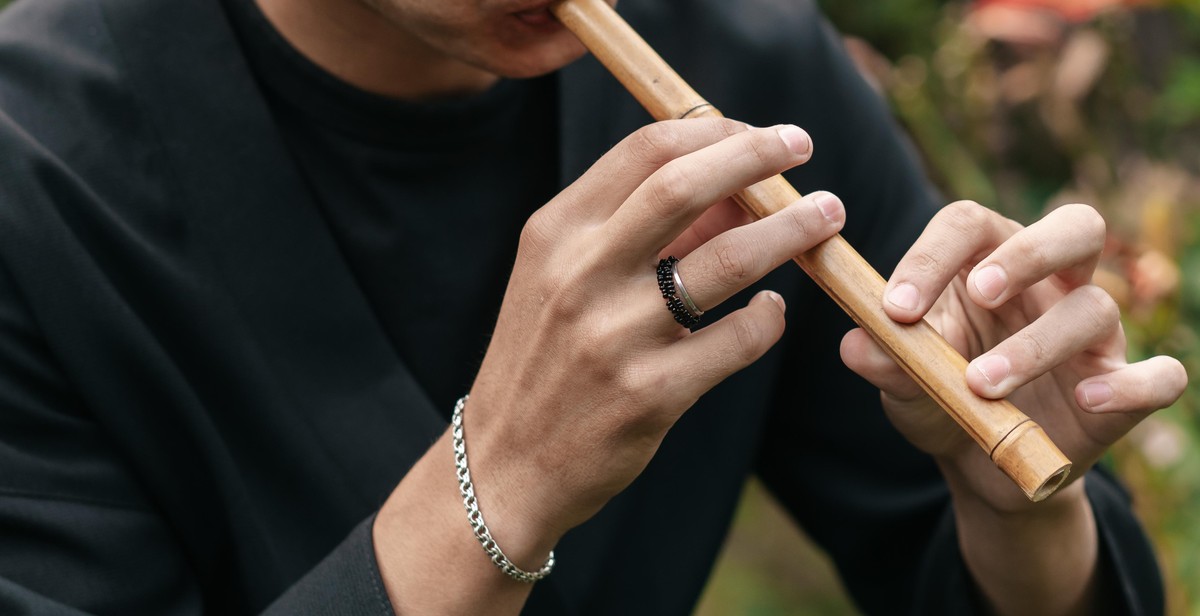How to Play the Flute: Beginner’s Guide to Breath Control and Fingerings
Learning to play a musical instrument can be a rewarding experience, and the flute is no exception. However, it can also be a challenging instrument to learn, particularly for beginners who have never played a wind instrument before. To play the flute, you need to learn how to control your breath and use your fingers to create different notes and melodies.
In this beginner’s guide, we’ll walk you through the basics of playing the flute, including breath control and fingerings. We’ll cover everything you need to know to get started, from how to hold the flute to playing your first notes.
Why Play the Flute?
The flute is a versatile and beautiful instrument that can be used in a wide range of musical styles, from classical to jazz and beyond. It’s also a great instrument for beginners, as it’s relatively easy to get started and requires minimal equipment.
Getting Started: Holding the Flute
Before you can start playing the flute, you need to know how to hold it correctly. The flute is held horizontally, with the mouthpiece pointing to the right. Your left hand should be positioned at the top of the instrument, while your right hand should be at the bottom.
 |
|
Breath Control
One of the most important aspects of playing the flute is breath control. To produce a sound, you need to blow air across the mouthpiece of the flute. The key is to blow a steady stream of air, without letting too much air escape or blowing too hard.
Practice blowing air through the mouthpiece without making a sound, to get a feel for the amount of air you need to produce a sound. Once you can produce a sound, practice playing different notes by changing the speed and intensity of your breath.
Fingerings
To play different notes on the flute, you need to use your fingers to cover and uncover the holes on the instrument. Each hole corresponds to a different note, and by opening and closing them in different combinations, you can create a wide range of melodies and tunes.
Start by learning the fingerings for the basic notes, such as C, D, E, F, and G. Practice playing these notes in different orders and combinations, to get a feel for how they sound together.
With practice and patience, you can master the basics of playing the flute and start creating your own beautiful music.

Choosing a Flute
When it comes to choosing a flute, there are several factors to consider, including the type of flute and whether to rent or buy.
Types of Flutes
There are several types of flutes available, each with its own unique characteristics:
- C Flute: The C flute is the standard flute and is the most commonly used. It is also the most versatile, as it can be used in a variety of musical genres.
- Piccolo: The piccolo is a smaller version of the flute and is pitched an octave higher. It is commonly used in orchestral and band music.
- Alto Flute: The alto flute is pitched in the key of G and has a lower, warmer sound than the C flute. It is often used in jazz and classical music.
- Bass Flute: The bass flute is pitched in the key of C and has a deep, rich sound. It is often used in chamber music and orchestral arrangements.
Renting or Buying a Flute
Before purchasing a flute, it is important to consider whether to rent or buy. Renting a flute is a good option for beginners who are not yet sure if they want to commit to playing the instrument long-term. It also allows for the opportunity to try out different types of flutes before making a purchase.
If you decide to purchase a flute, there are several factors to consider, including your budget and level of experience. Beginner flutes are typically made of nickel or silver-plated brass and are more affordable than professional-grade flutes, which are made of solid silver or gold.
| Rental | Purchase | |
|---|---|---|
| Cost | Low initial cost, but ongoing rental fees | Higher initial cost, but no ongoing fees |
| Flexibility | Allows for trying out different types of flutes before committing to a purchase | Provides the opportunity to own and customize your own instrument |
| Long-Term Investment | Not a long-term investment, as rental fees can add up over time | A long-term investment, as a high-quality flute can last a lifetime with proper care |
Ultimately, the decision to rent or buy a flute depends on individual circumstances and preferences. It is important to do research and consult with a music teacher or professional before making a decision.

Breath Control Techniques
Playing the flute requires proper breath control techniques to produce a clear and beautiful sound. Here are some tips on how to improve your breath control:
Proper Posture
Before you even start playing, it’s important to have proper posture. Stand up straight with your feet shoulder-width apart. Keep your shoulders relaxed and your head up. This will help you to take deep breaths and control your airflow.
Breathing Exercises
Practice breathing exercises to increase your lung capacity and control. One effective exercise is to inhale deeply and exhale slowly, trying to make the exhale last as long as possible. You can also practice holding your breath for a few seconds before exhaling. Repeat these exercises daily to improve your breath control.
Embouchure Techniques
Your embouchure, or the position of your lips and mouth, also affects your breath control. Make sure to form a tight seal with your lips around the mouthpiece of the flute. This will help you to control the air flow and produce a clear sound. You can also practice buzzing your lips without the flute to strengthen your embouchure.
Remember, breath control is essential for playing the flute. Practice these techniques regularly to improve your sound and overall playing ability.

Fingering Techniques
Playing the flute requires proper fingering techniques to produce the right notes. In this section, we will discuss basic and advanced fingerings, as well as how to read sheet music.
Reading Sheet Music
Before we dive into fingering techniques, it’s essential to learn how to read sheet music. Sheet music is a written form of music notation that tells you which notes to play and how long to hold them.
Each note on the sheet music corresponds to a specific fingering on the flute. It’s crucial to understand how to read sheet music to play the correct notes and produce the right sound.
Basic Fingerings
Basic fingerings are the foundation of playing the flute. These fingerings produce the most common notes and are essential to learn before moving on to advanced fingerings.
Here are some basic fingerings to get you started:
| Note | Fingering |
|---|---|
| C | o o o |
| D | o o o | o |
| E | o o o | o o |
| F | o o o | o o o |
| G | o o o | o o o | o |
| A | o o o | o o o | o o |
| B | o o o | o o o | o o o |
| C | o o o | o o o | o o o | o |
Remember to keep your fingers close to the keys and use the pads of your fingertips to cover the holes. This will ensure a clear and precise sound.
Advanced Fingerings
Advanced fingerings are used to produce notes that are not possible with basic fingerings. These fingerings require more precision and control and are often used in more complex pieces of music.
Here are some advanced fingerings to try:
- High E: o x o | o o o | o o o | o
- High F: o x o | o o o | o o o | x
- High G: o x o | o o o | o o o | x o
- High A: o x o | o o o | o o o | x o o
It’s essential to practice these fingerings slowly and with precision to ensure a clear and accurate sound.
By learning and practicing both basic and advanced fingerings, you’ll be able to play a wide range of notes and pieces of music on the flute.

Playing Your First Song
Now that you have learned the basics of breath control and fingerings, it’s time to start playing your first song on the flute. Here are some tips to help you choose, practice, and perform your first song:
Choosing a Song
When choosing your first song, it’s important to pick something that is simple and easy to play. Look for songs that use only a few notes and have a slow tempo. Here are some great options for beginner flute players:
- Hot Cross Buns
- Twinkle, Twinkle, Little Star
- Mary Had a Little Lamb
- London Bridge Is Falling Down
Once you have chosen your song, make sure to find the sheet music or tutorial online to help you learn the notes and timing.
Practice Tips
Practice is key to playing any instrument, and the flute is no exception. Here are some tips to help you practice your first song:
- Break the song down into small sections and practice each section slowly and consistently.
- Use a metronome to help you keep a steady tempo.
- Record yourself playing the song to listen for mistakes and areas that need improvement.
- Practice regularly, even if it’s only for a few minutes a day.
Performance Tips
Once you have practiced your song and feel confident, it’s time to perform! Here are some tips to help you give a great performance:
- Practice in front of friends or family members to get used to playing in front of an audience.
- Take deep breaths and relax before playing.
- Focus on playing with good tone and intonation.
- Visualize yourself playing the song perfectly before you start.
| Step | Tip |
|---|---|
| Choosing a Song | Pick something simple and easy to play |
| Practice | Break the song down, use a metronome, record yourself, practice regularly |
| Performance | Practice in front of others, take deep breaths, focus on tone and intonation, visualize success |

Conclusion
Playing the flute can be a rewarding and fulfilling experience for beginners, but it requires dedication and practice to master. The key to playing the flute is breath control and fingerings, and with the right techniques and tips, anyone can learn how to play this beautiful instrument.
Tips for Beginner Flute Players
- Practice breathing exercises to improve your breath control.
- Start with simple fingerings and gradually progress to more complex ones.
- Use a metronome to help you maintain a steady rhythm.
- Listen to recordings of professional flute players to learn from their technique and style.
- Take lessons from a qualified flute teacher to receive personalized instruction and feedback.
Flute Maintenance
Proper maintenance of your flute is essential to ensure its longevity and optimal performance. Here are some tips:
- Clean your flute after each use with a soft cloth.
- Oil the keys and rods regularly to prevent rust and corrosion.
- Store your flute in a dry and cool place to prevent damage from humidity and temperature changes.
Final Thoughts
Learning how to play the flute can be a challenging but ultimately rewarding experience. With patience, dedication, and the right techniques, anyone can master this beautiful instrument. Remember to practice regularly, seek guidance from a qualified teacher, and take good care of your flute to ensure its longevity and optimal performance.
